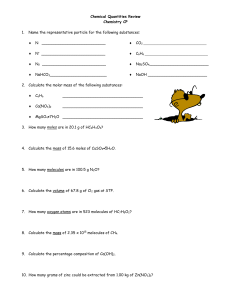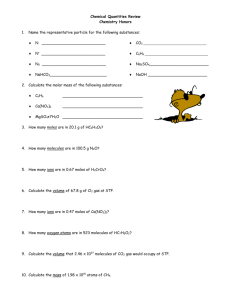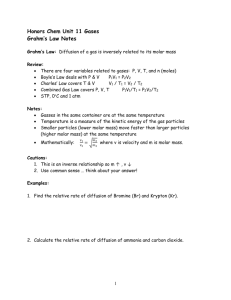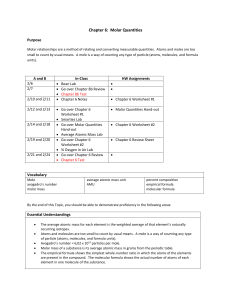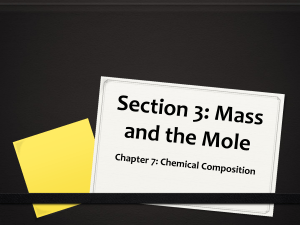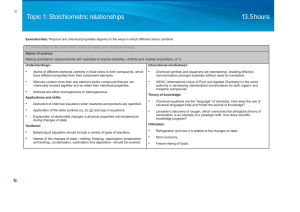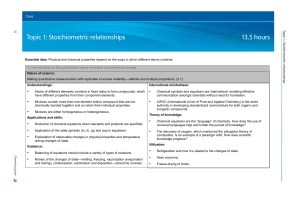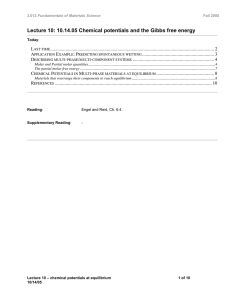Chemistry Weeks 26-27: February 8th
advertisement
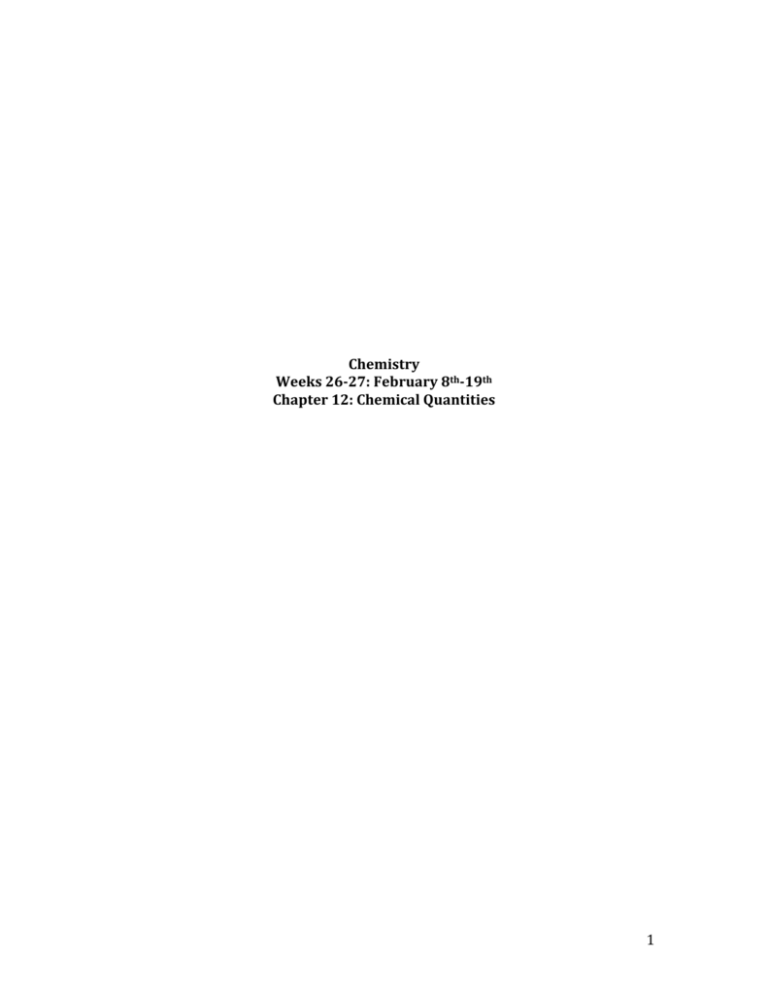
Chemistry Weeks 26-27: February 8th-19th Chapter 12: Chemical Quantities 1 Chapter 12 Outline Chapter 12: Chemical Quantities 12.1 Counting Particles of Matter 1. Stoichiometry 2. Molar Mass a. Molar Mass of an Element b. Molar Mass of a Compound 12.2 Using Moles 1. Using Molar Masses in Stoichiometric Problems 2. Using Molar Volumes in Stoichiometric Problems 3. Ideal Gas Law 4. Theoretical Yield and Actual Yield 5. Determining Mass Percents 6. Determining Chemical Formulas a. Connecting Ideas 1. 2. 3. 4. 5. 6. 7. Chapter 12 Objectives Students will recall all Chapter 12 vocabulary words. Students will compare and contrast the mole as a number and the mole as a mass. Students will relate counting particles to weighing samples of substances. Students will solve stoichiometric problems using molar mass. Students will predict quantities of reactants and products in chemical equations. Students will determine mole ratios from formulas for compounds. Students will identify formulas of compounds by using mass ratios. 2 Oklahoma Academic Standards (OAS) for Chemistry HS-PS1Matter and Its Interactions 1. Use the periodic table as a model to predict the relative properties of elements based on the patterns of electrons in the outermost energy level of atoms. 2. Construct and revise an explanation for the outcome of a simple chemical reaction based on the outermost electron states of atoms, trends in the periodic table, knowledge of the patterns of chemical properties, and formation of compounds. 3. Plan and conduct an investigation to gather evidence to compare the structure of substances at the bulk scale to infer the strength of electrical forces between particles. 4. Develop a model to illustrate that the release or absorption of energy from a chemical reaction system depends upon the changes in total bond energy. 5. Apply scientific principles and evidence to provide an explanation about the effects of changing the temperature or concentration of the reacting particles on the rate at which a reaction occurs. 6. Refine the design of a chemical system by specifying a change in conditions that would produce increased amounts of product at equilibrium. 7. Use mathematical representations to support the claim that atoms, and therefore mass, are conserved during a chemical reaction. 8. Develop models to illustrate the changes in the composition of the nucleus of the atom and the energy released during the processes of fission, fusion, and radioactive decay. HS-PS2 Motion and Stability: Forces and Interactions 6. Communicate scientific and technical information about why the molecular level structure is important in the functioning of designed material. HS-PS3 Energy 1. Design, build, and refine a device that works within given constraints to convert one form of energy into another form of energy. 2. Plan and conduct an investigation to provide evidence that the transfer of thermal energy when two components of different temperature are combined within a closed system results in a more uniform energy distribution among the components in the system (second law of thermodynamics). HS-PS4 Waves and Their Applications in Technologies for Information Transfer 1. Use mathematical representations to describe relationships among the frequency, wavelength, and speed of waves. 3. Evaluate the claims, evidence, and reasoning behind the idea that electromagnetic radiation can be described either by a wave model or a particle model, and that for some situations one model is more useful than the other. 3 Daily Lesson Plan Week 26: February 8th-12th 8th: Read Chapter 12, Write Out Vocabulary Words 9th: Chapter 12 Lab 10th: Chapter 12 Lecture, Worksheet, & Quiz 11th: Chapter 12 Lab 12th: Chapter 12 Study Guide/Zeros Report Week 27: February 15th-19th 15th: No School 16th: Chapter 12 Study Guide Review 17th: Chapter 12 Review (Jeopardy) 18th: Chapter 12 Test 19th: Chapter 12 Review/Zeros Report 4

